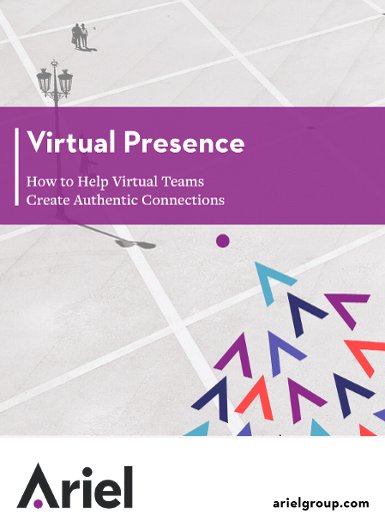Help Us Be Present – A Love Letter from your Virtual Audience

If you’re on the phone non-stop all day, practice this structure for the meetings you’re leading and you’ll find it’s a natural organizer to your meetings and your day.
I spend a good amount of time on the phone. I am one of the lucky ones, as I work in an office with wonderful colleagues, and I also work with fantastic remote colleagues who I can see via video-phone when we talk. It’s easy for me to be present in these virtual or live face-to-face meetings.
But I also spend a fair amount of time on external calls with vendors, channel partners, clients, and members of our sales team. There are often a half-dozen or more of us calling in from goodness-knows-where and these are the times when my ability to stay present is challenged. Many questions and curiosities come up for me as I sit on mute, listening:
- I wonder what this call is about…
- Is there an agenda?
- Is there a goal? What are we trying to accomplish on this call?
- The man with the British accent, I think his name is Clive – I wonder if he is in London or he’s an ex-pat living somewhere else.
- I wonder if we’ll go the whole hour. I’ve got a lot of work to do.
These unanswered questions keep me from being present. It makes me think of the days, in another lifetime, when I taught drama classes to middle school students. I had to over explain and be very succinct at the same time. Here’s an example of the script from that time in my life:
Today we are rehearsing A Midsummer Night’s Dream, Act 2, Scene 1. Emma H., Joe, Max and Alexia, and only Emma H., Joe, Max and Alexia, please go get your scripts and join me on stage. Once these four actors are onstage, the rest of you may get your scripts and sit in the audience. Go.
I know it sounds pedantic, but I learned the hard way that vague, longwinded directions resulted in chaos. I would argue that 20 years hence we are as distracted as the average hormonal middle school student, what with our phones and email and Twitter accounts pinging and ringing and popping up non-stop.
What I’m suggesting is that your distracted virtual audience needs direction and expectations clearly and succinctly set at the top of every call so that they can be as present as possible.
And here is a 6-step process for kicking off any virtual meeting or presentation:
- Welcome and introduce everyone. Start by saying why we are meeting and who’s on the line: “Welcome to the kick-off meeting for Presence Essentials, our new online program for early-career professionals. Here at headquarters we have Sean and myself. In the DC office, we have Elsa and Bobbi, and Chris is on the line from Toronto. Welcome everyone! “ (And don’t forget to do all this with energy and breath-supported vocal variety).
- Share the goal of the meeting. Make it succinct and manageable. “By the end of the hour, I’d like us all to know and agree on the timeline for the launch.”
- Share the agenda. “Elsa is going to share the draft timeline and then I’d like us to each go around and weigh in from our departments on how realistic it is and if you anticipate any delays.”
- Set expectations for participation. “Let’s hold questions and comments until after each manager has weighed in. I’ll make sure to pause after each of us speaks. I’ve put a parking lot on the white board so we can capture any items we don’t have time to dive into today.”
- Check for understanding. “Does that sound like a good use of our hour? Have I missed anything? Any questions?”
- Invite people to check-in. (see my colleague Stephanie’s blog on the value of check-ins) “Before we start, let’s go around and do a quick check-in. Give us a word or phrase for how you’re doing and let us know if there’s anything that’s keeping you from being present. I’ll go first.”
If you’re on the phone non-stop all day, practice this structure for the meetings you’re leading and you’ll find it’s a natural organizer to your meetings and your day. If it helps, make it your intention to have everyone know each other by the end of the call and to leave with a shared purpose. You and your audience will have a much richer experience.
Is your team focused during remote calls? Here are the best practices for your distracted virtual audience.

